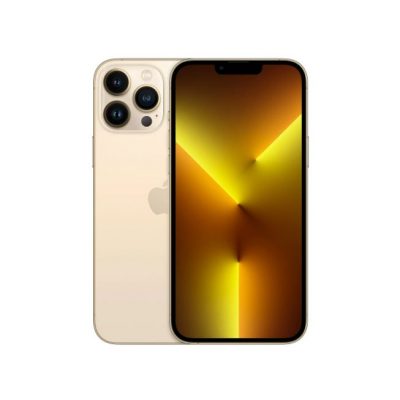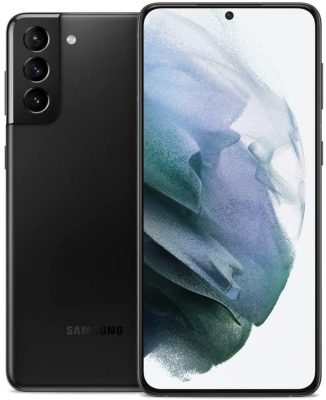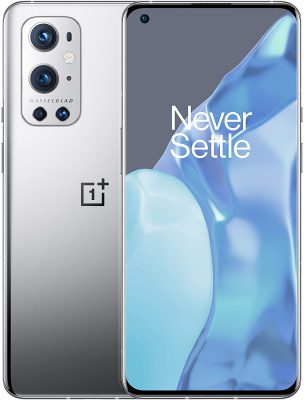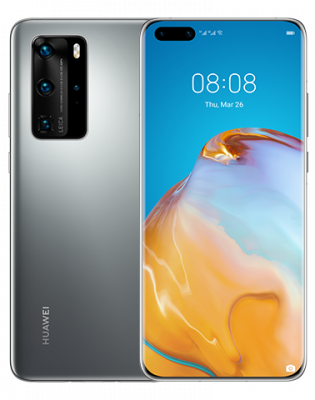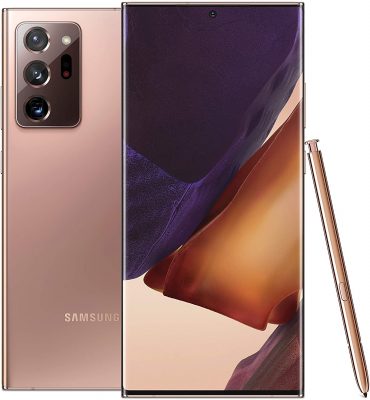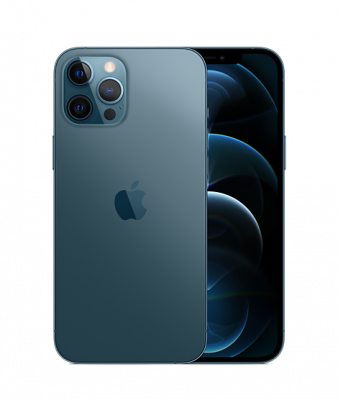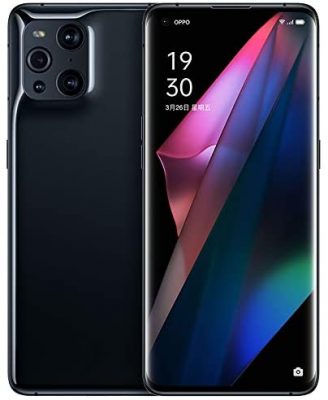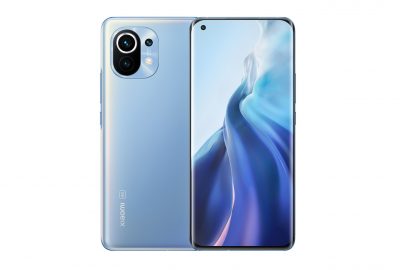Are you looking for a more innovative and future-ready smartphone? If yes, then 5G phones are your perfect option nowadays. Although 5G infrastructures may not be available yet in your location, know that it’s just temporary. With 5G technology, it’ll eventually become the new normal in the foreseeable future.
Jump to the List
What Is 5G?
You’ve probably heard “5G” for quite a while now, but you’re never really sure about its relevance. In a nutshell, 5G is a 5th generation network of mobile connection. It’s the latest global wireless network after 4G networks. With 5G networks, the way people live, work, and play is revolutionized. Hence, 5G network offers a world of possibilities — creating new opportunities for different communities, businesses, and people.
Moreover, 5G provides people with the opportunity to enjoy a faster and more stable mobile Internet. Whether you’re streaming Netflix movies or creating backups on your cloud storage account, access to faster mobile data performs wonders.
As an introduction, the best 5G phones commonly have super-sized batteries, larger screens, and excellent camera features. However, it’s not surprising, after all, since many of the 5G-ready smartphones are the current market’s overall best phones. The main factor is that they are already integrated with 5G functionalities.
Is a 5G Phone Worth It?
Getting a 5G phone entirely depends on two primary factors, namely, your current location and type of usage. If you regularly download larger files or tether your mobile on the go, purchasing the best 5G phone is a good investment. Nevertheless, you should also ensure that the 5G network is already available in your city.
Thankfully, the 5G rollout is in full swing, at least in the US. Although it’s far from being fully covered, there has been a significant leap in the number of cities that have the infrastructure. An estimated 75% of the country is said to be collectively covered by 5G networks.
In general, 5G is only available in select major cities around the world. Therefore, you should verify with your local service provider before switching to 5G smartphones. If they are, then here are the best 5G-ready phones you can invest in.
Best 5G Phones
Although Apple is late to the 5G party, the iPhone 12 Pro still managed to clinch the top spot for the best 5G phones on our last year’s list. Today, it’s passing on its torch to its successor, the iPhone 13 Pro Max. Regardless of the type of 5G network provider, the iPhone 13 Pro Max supports 5G in almost all locations. Consequently, it’s a reliable option if you’re planning to switch to a 5G smartphone.
Apple’s 5G compatibility comes with a price, compromising the battery performance when connected to a more stable and faster internet connection. Despite that, Apple has integrated powerful features as compensation. The latest iPhone series has an impressive Super Retina XDR OLED screen and the most powerful A15 Bionic processor that is unparalleled in almost all smartphones.
With all-new features, Apple’s iPhone 13 Pro Max is an excellent smartphone overall, not only the best 5G phone available. It has a Quad camera system integrated with a LiDAR sensor, delivering the highest quality of images from a mobile device.
In terms of charging capabilities, the iPhone 13 Pro Max has MagSafe charging technology, making it easier to charge the phone wirelessly. But bear in mind that all iPhone devices only come with a Lightning cable. MagSafe chargers are to be purchased separately.
Pros
- – Excellent Camera Features
- – Comprehensive 5G Support
- – Powered by a powerful A15 Bionic Chip
CONS
- – The MagSafe charger isn’t included in the package
- – 5G Network quickly drains the battery
The Galaxy S21 Plus is Samsung’s best entry in the 5G phone arena. This Samsung 5G phone is powered by the Snapdragon 888 processor, making the 5G network efficient and reliable enough to compete with any Android device.
However, the biggest drawback of Samsung’s Galaxy S21 Plus is its price range. At a price that can exceed the $1000 mark, it’s a more expensive option for budget-conscious smartphone users. Although it’s not the most affordable 5G phone, the Galaxy S21 Plus offers numerous features.
With S21 Plus’s Dynamic AMOLED screen, you can configure a 120Hz refresh rate for a more immersive and more seamless gaming and scrolling experience. However, as a reminder, the faster the refresh rate, the quicker the phone’s battery will become depleted. The company has also delivered remarkable developments in its four rear cameras, offering 64-megapixel telephoto lenses for excellent and super-crisp zoom images.
Affordable 5G phones are becoming more available; however, Samsung’s Galaxy S21 Plus provides you with an excellent balance between pricing and functionalities.
Pros
- – 64-megapixel telephoto lens
- – 120Hz refresh rate for display features
cons
- – Costly
- – 120Hz refresh rate compromising the battery performance
Aside from being one of the reputable Android smartphones, the OnePlus 9 Pro is one of the best 5G phones to invest in. Although its price is less than Samsung’s Galaxy S21 Plus, you’re getting what you’ve paid for. The 5G phone from OnePlus has limited features compared to other 5G smartphones on this list. Since it’s available in unlocked versions, you can’t purchase the OnePlus 9 Pro through specific mobile service providers.
Speaking of the OnePlus 9 Pro’s 5G capabilities, the phone is compatible with both sub-6GHz-based and mmWave-based 5G technology. Aside from that, one of the noteworthy features of the OnePlus 9 Pro is its excellent display. As a result, you have a 6.7” curved Fluid AMOLED screen with 525ppi display quality. Like Samsung’s Galaxy S21 Plus, the OnePlus 9 Pro offers a 120Hz refresh rate, providing you with more seamless gaming and browsing.
With flagship status, the OnePlus 9 Pro is undoubtedly integrated with flagship-worthy features. This 5G phone operates with Snapdragon 888 chipset and has a maximum of 12 GB RAM. Aside from that, it has a 48-megapixel quad-lens camera for excellent mobile photography.
In terms of battery performance, the OnePlus 9 Pro is powered by a 4,500mAh battery compatible with 50W wireless charging. That said, you’re guaranteed a powerful flagship device without compromise in its quality and performance.
pros
- – Premium look
- – Excellent macro features
- – Impressive camera
CONS
- – Expensive for the OnePlus range
- – Poor zoom-in camera quality
Sony’s Xperia 1 III features a more efficient Snapdragon 888 chipset, making it Sony’s premium flagship device. Integrated with a 4500 mAh battery, Xperia 1 III lets you create unlimited texts and calls, record many videos, and shoot plenty of images before charging its battery. Its huge battery capacity is also badly needed to support its impressive 4K HDR OLED 120Hz display at 21:9 aspect ratio — an excellent feature for a gaming phone.
For social media geeks who love taking photos, Xperia 1 III has a quad-camera system on its rear, including three 12-MP cameras integrated with Zeiss lens capability. Aside from that, Xperia 1 III has an f/2.2 ultra-wide lens, a maximum f/2.4 telephoto lens, and an f/1.7 wide lens. Hence, it’s also one of the best 5G phones for mobile photography.
Speaking of its storage capacity, Xperia 1 III has 256 GB minimum internal storage, and 12 GB RAM. Unlike most modern 5G phones, it is integrated with a MicroSD slot for additional storage.
PROS
- – Headphone jack included
- – Impressive display
CONS
- – 5G capability not available in the US
- – Expensive
Huawei is known for providing the best hardware for its smartphones. Hence, the Huawei P40 Pro is one of the best 5G phones of its kind. The phone’s camera is everything you need for an excellent mobile photography experience. It offers soft-focus quality to images, delivering plenty of details.
Like other flagship devices with zoom features, the P40 Pro offers a more detailed image quality. Hence, you won’t have to enable its 50x digital zoom. Despite that, you can use its 5x optical zoom as an essential feature.
The Huawei P40 Pro’s 50-MP high-resolution images aren’t produced by other integrations. Instead, all cameras deliver excellent results. The video recording quality is also unparalleled. By far, it’s the best 5G phone for most content creators.
The drawback of the Huawei P40 Pro is the lack of Google integrations. It can come off as a major inconvenience among many smartphone users. However, if you’re OK with this absence, then the Huawei P40 Pro is the best 5G phone for impressive mobile photography.
pros
- – Excellent for 4K video recording
- – Impressive low light quality
- – 50-MP Leica camera feature
cons
- – Google not supported
- – 50x zoom not incredible
Any list of the best 5G phones wouldn’t be complete without the Samsung Galaxy Note 20 Ultra. It’s one of the most innovative smartphones under the 5G category.
Samsung’s Note 20 Ultra is integrated with state-of-the-art features, including Snapdragon 865 chipset, 512 GB internal storage, and 12 GB RAM. Aside from that, it is built with an excellent 6.9” screen, paired with a 120Hz refresh rate. Also, it is compatible with the S Pen for your digital note-taking needs. Hence, you’ve got everything you need in one robust 5G-ready smartphone.
Another noteworthy feature of the Galaxy Note 20 Ultra is its camera feature. It has a triple rear camera, with two 12-MP cameras, and 108-MP primary camera. On the contrary, it is also integrated with a 10-MP front-facing camera.
Without a doubt, Samsung’s Galaxy Note 20 is a premium flagship device. However, you’re going to pay a hefty price for this 5G phone. If you have the means, you can definitely purchase this as one of the best 5G phones. Although it’s more expensive compared to other 5G phone contenders, Note 20’s excellent features, integrations, and technology can provide justice to its price.
Pros
- – S-Pen support
- – Impressive 120Hz Screen
- – Xbox game compatibility
CONS
- – Very expensive
- – Slow charging
- – Large rear camera bump
Another contender from Apple for the best 5G phone is the iPhone 12 Pro Max. Unlike the iPhone 12 Pro, the Pro Max has a bigger battery capacity. Hence, you enjoy faster internet speeds for a more extended period.
During independent testing of its battery, the iPhone 12 Pro Max lasted approximately 11 hours on continuous web browsing. Through its Smart Data feature, you can automatically switch between 4G and 5G networks when you’re running less resource-consuming apps.
Thanks to its brilliant 6.7” OLED screen, the iPhone 12 Pro Max is perfect for video streaming and recording. Its primary camera offers a bigger 1.7 pixels for approximately 87% low-light performance improvements. Aside from that, you can enjoy 2.5x telephoto zoom for having a closer shot of your target object.
Integrated with a powerful A14 Bionic chip, MagSafe wireless charging technology, and robust Ceramic Shield, you’ll have the most powerful and state-of-the-art 5G phone from Apple.
Pros
- – Impressive battery performance
- – Attractive 6.7” display
- – Excellent performance
cons
- – Slightly heavy and bulky
- – Charger not included
If you’re a die-hard Samsung supporter on a budget, the Galaxy S20 FE is the best 5G phone for your needs and preference. For less than $700, Galaxy S20 FE features a faster 102Hz refresh rate on an OLED screen and a powerful Snapdragon 865 chipset.
Although it’s short when it comes to battery performance, Samsung’s Galaxy S20 FE offers an excellent 6.5” screen display. Aside from that, it supports all kinds of 5G connectivity.
PROS
- – Affordable Samsung 5G flagship device
- – Robust performance
- – Impressive 120Hz display
CONS
- – Poor battery performance
- – Fast charger not included
Oppo’s Find X3 Pro is a premium flagship smartphone, providing top-tier features such as a 120Hz refresh rate on a 6.7” screen, an impressive quad-camera system, and a unique finish in the external body.
The Find X3 Pro is integrated with a massive, fast-charging battery. It is also powered by Snapdragon 888 chipset and up to 16GB of RAM. If you’re planning to jump into the 5G trend and venture on a smaller brand, the Oppo Find X3 Pro is the best 5G phone you can start with.
PROS
- – Excellent screen display
- – Comfortable to hold
CONS
- – Mediocre battery life
- – Expensive for its brand
Xiaomi Mi 11
Without a doubt, Xiaomi has recently been creating a reputation for manufacturing premium smartphones with an affordable price range. The Mi 11 is one of the best 5G phones under the Xiaomi brand.
The Mi 11 is an excellent flagship device with a 108-megapixel primary camera, powerful processor, and an attractive screen. Although it’s not as feature-rich compared to other 5G mobile devices on this list, it’s one of the best 5G phones you can try as an introduction.
The Mi 11 also has a cheaper lite version that looks like an iPhone.
PROS
- – Smooth and attractive display
- – Superior finish and design
CONS
- – Telephoto camera
Pick Your 5G Phone
Choosing the best 5G phone isn’t the only thing that you should consider. That said, you should also determine which wireless network provider pairs with your cellular network service. Different companies have various strategies and offerings on their 5G mobile packages.
Aside from 5G network providers, your criteria for the best 5G phone is generally the same as choosing your previous handsets. You should select which camera, screen size, processor, brand, and other features best work with your needs and preferences.
Of course, you should also look at the performance of the battery. 5G network consumes more battery than previous mobile networks. Hence, you should purchase the best 5G phone with more powerful battery performance.
Price is another crucial factor that determines which of the best 5G phones you can purchase. With more and more companies integrating 5G technology, 5G phones will eventually become more affordable. For example, the OnePlus 8 is already a 5G-enabled smartphone, costing only $699. Unlike in 2019, a 5G phone costs between $800 to $1,500.
People can expect more 5G smartphones to roll out at a starting price of $500. Thanks to Qualcomm’s cheaper alternatives Snapdragon 768G and Snapdragon 765, both chipsets already include 5G capabilities. As a result, more affordable 5G phones will soon dominate the market.

